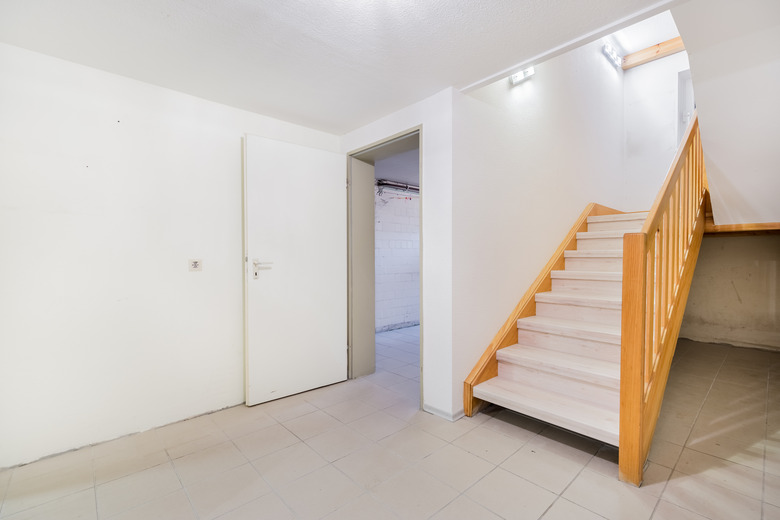What Is Radon?
We may receive a commission on purchases made from links.
Radon is a radioactive chemical element, part of a group known as the noble gases. More important, radon is a gas that poses notable health risks when present in your home. It is important to know if your home contains radon, and at what levels, so that you can take the steps necessary to correct the problem.
The Chemistry of Radon
The Chemistry of Radon
Noble gases are characterized as being nonreactive and inert. Nonreactivity means radon doesn't ordinarily form multi-atom molecules. As a single atom, it remains small and more able to penetrate common materials like plastic sheeting, paints, concrete block, gypsum board and most insulation. Of the noble gases, radon is the heaviest and it's nine times denser than air. That density means radon will accumulate most intensely in the lower levels of a residence, principally in basements and crawl spaces.
Because it's a gas, radon is readily breathed and, because it's odorless and colorless, the only way to detect its presence is to test for it. Radon, especially at high concentrations, is carcinogenic and the second leading cause of lung cancer after smoking. The U.S. Surgeon General's office has estimated that radon exposure results in 21,000 lung cancer deaths per year. Radon is especially lethal to smokers, who account for about 85 percent of those 21,000 deaths.
The product of the radioactive decay of natural uranium in rock, soil and water, radon has a half-life of 3.8 days. As it decays, radon emits alpha radiation – the same radiation emitted by plutonium. Byproducts of radon's rapid decay are short-lived and known as radon progeny or radon daughters. These radon daughters are also radioactive and, because they are not gases, can attach themselves to dust and other particles easy to breathe in. As the decay process continues, the radon daughters release radiation until stable, nonradioactive isotopes of lead result.
Radon Is Everywhere
Radon Is Everywhere
Because radon is so ubiquitous, the question is seldom one of whether radon is present but rather in what concentration it's found. Especially common in igneous rocks, uranium can be detected in soils throughout the U.S. As uranium's radiation dissipates, radon is constantly released.
In the outdoors, radon doesn't represent a hazard, because natural air flow keeps radon at inconsequential levels and allows it to disperse harmlessly. Only when radon is allowed to accumulate undisturbed does it become dangerous.
Testing Radon Levels
Testing Radon Levels
There are two basic methods of testing for radon: passive testing and active testing. Passive testing uses a radon collection device such as a charcoal canister or an alpha-track detector. These collection devices are positioned undisturbed for a prescribed amount of time and then sent to a lab for analysis. Passive testing can be performed by a homeowner, but it's not considered precise. Use it preliminarily to signal whether there may be a problem that calls for more precise testing.
Active radon testing devices are powered units that measure and record radon levels in the air over a set period—the longer the period, the more accurate the reading. Active radon testing equipment is available through digital testing devices. If you need documentation of your home's radon levels, home inspectors and air quality professionals are additionally qualified to certify their results.
Radon may also be present in drinking water, especially if you get your water from a private well. Testing water for radon requires sending a sample to a testing laboratory. If the results prove positive, the radon level can be mitigated through the addition of an aeration system or through the use of charcoal filters.
Radon Remediation Techniques
Radon Remediation Techniques
Remediation of radon uses two basic strategies. The first step is to seal any cracks or gaps or defects that provide points of entry. Careful attention to those serves to minimize the radon influx.
Next, vent radon outside. Do this by inserting a vent pipe equipped with an in-line fan through the concrete floor and into the soil. Within the living space, removing concentrated radon means drawing air from near the floor where the heavier radon gas has accumulated and allowing fresh air to replace it.
Recognition of the danger posed by high levels of radon gas has risen in the public consciousness recently. You should test to see if your home has a radon problem.
